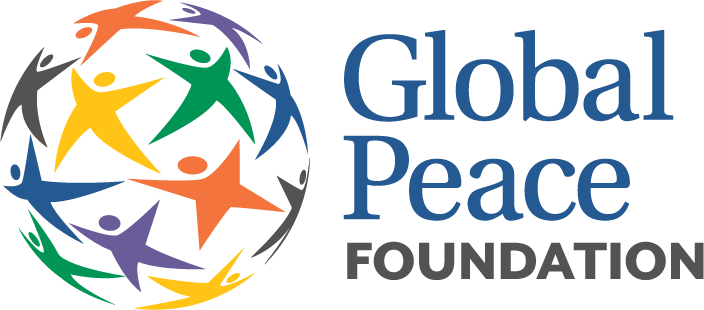

Radio-Based Instruction Transforms Education for Children in the Philippines
When COVID-19 disrupted education systems across the globe, schools took a great shift from face-to-face instruction to an online and modular one. Unfortunately, many were in danger of being left behind because they did not have access to technology or the internet.
Global Peace Foundation (GPF) Philippines has been working tirelessly to create new opportunities for children despite the challenges brought on by the pandemic, including an alternative to the internet to serve rural schools.
The Radio-Based Instruction (RBI) program is an alternative learning delivery modality that uses a radio broadcast to offer students lessons utilizing self-learning modules (SLM). This method provides access to education to students living in remote areas and those who have limited access to the internet. The goal of the program is to give students learning opportunities as a supplement to their SLM usage in the absence of actual face-to-face instruction.
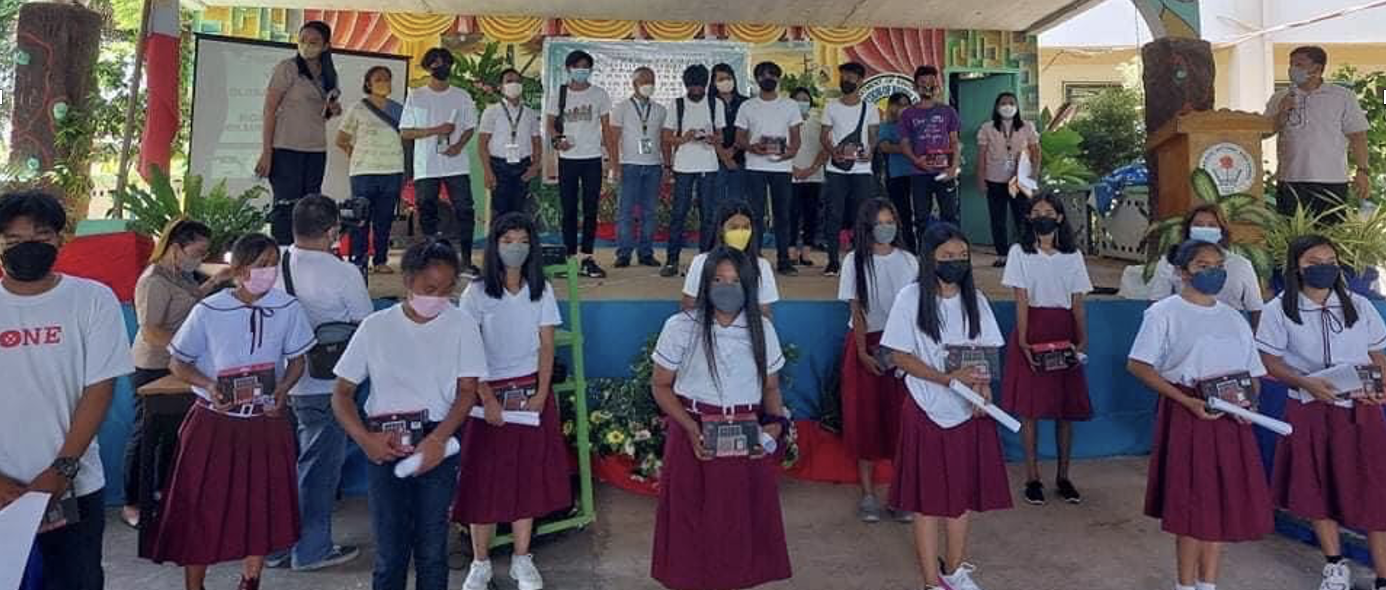
Turn-Over Ceremony of transistor radios for CENHS in the Philippines.
On March 8, 2022, GPF Philippines held a Turn-Over Ceremony of Transistor Radios for the Senior High School Students of Canaan East National High School (CENHS). The event was attended by the Regional Director of Region III, Dr. May B. Eclar, SDO; Nueva Ecija’s Superintendent, Sir Jessie D. Ferrer; Assistant Superintendent, Mr. Ronilo E. Hilario; District Supervisor of Rizal, Dr. Elizabeth P. Sibayan; Mayor of the Municipality of Rizal, Hon. Hanna Katrina L. Andres; and many faculty members from different schools.
Through the generosity of its stakeholders, CENHS was able to provide each learner with a radio transistor for their studies. The students were eager to begin and the teachers were dedicated, beginning instruction only a day after the event.

Teachers during on-air discussions through radio-based instruction.
GPF Philippines continued to distribute essential education materials throughout March, providing transistor radios, solar lanterns, face masks, and pencils for the students of Flora Primary School in Sitio Flora, Maruglo, Capas, and Tarlac and Manabayukan Elementary School in Sitio Manabayukan, O’Donnell, Capas, and Tarlac. The donations were made possible with the partnership of DepEd RO III, the Schools Division Office of DepEd Tarlac, the Municipal Government of Capas, The Lord’s Family Foundation, Korea Import & Export Bank, and GPF Korea.
Learn more about how GPF is helping transform education and build peace in the Philippines .
Take Action
Create a positive and impactful change in your area today.
Recent Posts
Outstanding schools awarded for promoting holistic learning in kenya, more articles.
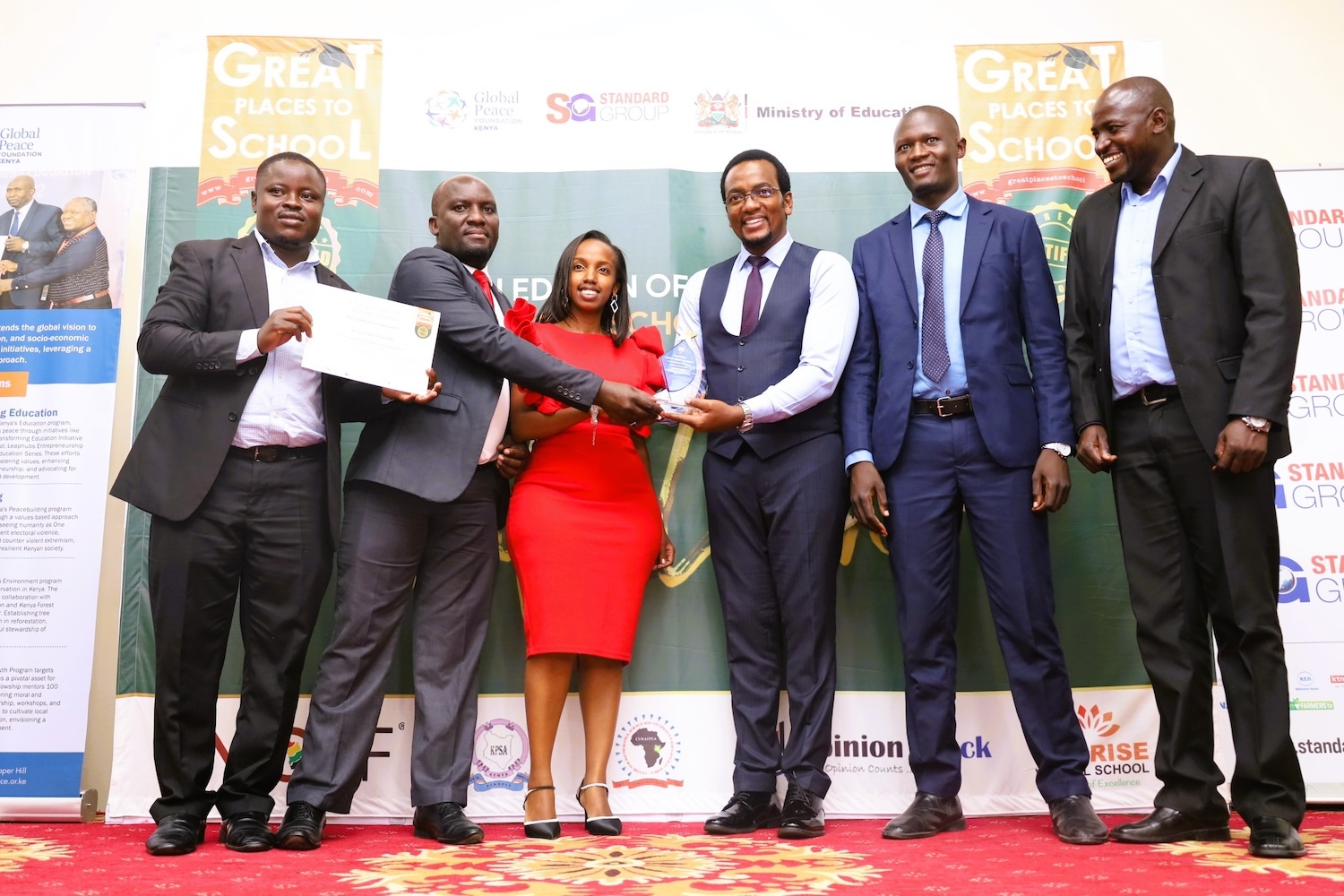
Promoting Environmentally-Friendly Hygienic Practices and Products in Nepal
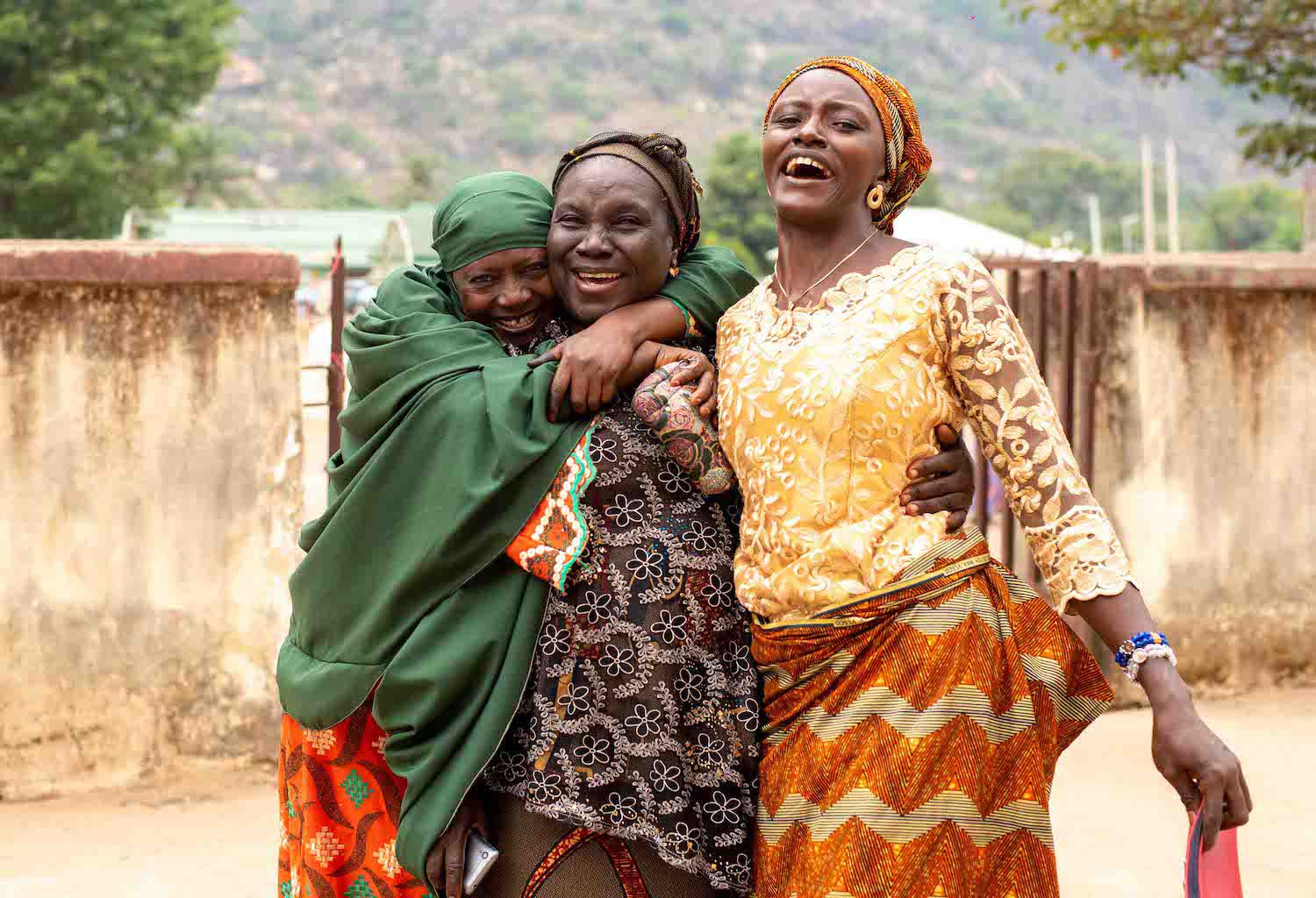
2023 Year in Review
By providing an email address. I agree to the Terms of Use and acknowledge that I have read the Privacy Policy .
6,000 TV, radio lessons ready – DepEd
MANILA, Philippines — More than 6,000 educational TV and radio shows are ready to be aired all over the country, as distance learning in public schools begins on Monday amid the continuing threat of the COVID-19 pandemic, according to an official of the Department of Education (DepEd).
Undersecretary Tonisito Umali said the programs would complement online and modular lessons, which would be the norm as the government has prohibited in-person classes.
He said the DepEd had a system to help parents and students with the many challenges that came with distance learning.
Public school classes had been postponed for two months to give educators more time to prepare for the new modes of instruction and learning.
Supplement to online class
A total of 24.7 million students enrolled in public and private schools this year, or 89 percent of enrollees in the previous school year.
Umali said 3,120 television lessons and 3,445 radio episodes would be aired in 207 television channels and 162 radio stations nationwide.
“That will supplement the instruction that would be given online, or if there is no access to gadgets or the internet, or through self-learning modules,” he said at Saturday’s Laging Handa news briefing.
Umali said the DepEd had advised school superintendents and regional directors which episodes should be shown on a given day, at what time slots, and for which grade levels.
The information on these shows should also be included in the weekly learning plan for the students, Umali said.
He said the DepEd would check if students understood the lessons, adding that teachers would know—when students return their activity sheets—if they have learned what was taught. Parents would also be given contact numbers of teachers if they need to call about their children having difficulty with their lessons, he said.
If parents could not get the self-learning modules themselves, the DepEd would find a way to deliver them to the students.
As of the third week of September, the DepEd has distributed more than 533 million self-learning modules, or 80 percent of the target.
Subscribe to our daily newsletter
Umali said the DepEd would be flexible with students who had difficulty with internet connection.
News that matters
Disclaimer: Comments do not represent the views of INQUIRER.net. We reserve the right to exclude comments which are inconsistent with our editorial standards. FULL DISCLAIMER
© copyright 1997-2024 inquirer.net | all rights reserved.
We use cookies to ensure you get the best experience on our website. By continuing, you are agreeing to our use of cookies. To find out more, please click this link.
Students Faculty Alumni Visitors
DYUP launches radio programs on air

Envisioned to be an educational radio station for the community and by the community, three radio programs were launched at DYUP 102.7 FM on February 17, 2020, at the College of Arts and Sciences, UP Visayas, Miagao, Iloilo.
These programs are: Good Morning Barkada (music), DYUP Balita (news), and DYUP Interactive. The last is a talk show that discusses relevant topics in UPV which has two segments namely: UPV Sadto and UPV Tulad. Also in the pipe line is Tunog Isko, a program that will feature the golden voice of the students.
The UPV community can now tune in to their livestream cast through their FB page: DYUP 102.7.
The station is under the management of the Division of Humanities, College of Arts and Sciences, (CAS) through its BA Communication and Media Studies program.
Prof. Mary Babbeth Vargas, station manager of DYUP, revealed that the station existed 40 years ago at the UPV Iloilo City campus. It was moved to UPV Miagao along with the transfer of CAS. Through the years, the Division has been slowly building the broadcast facility of the CMS program. She said that UPV had the franchise to operate but had no money to build a radio antenna. It was during the time of Chancellor Rommel Espinosa that funds to build the antenna was aggressively pursued.
Some alumni of the BA CMS who are practioners in the field graced the occasion. They are Ian Gajete of Bombo Radyo Iloilo, Erlyn Bayonita of Bombo Radyo Bacolod, Jeremae Ventar of Aksyon Radyo and Auser Jann Pagunsan of ABS-CBN Iloilo.
Prof. Susan Alvarez-Tosalem, Chair of the Division of Humanities and Prof. Ma. Severa Fe Katalbas, Dean of the College of Arts and Sciences, commended the labor of love of the DYUP team, namely Prof. Vargas, Jude Vincent Parcon, Charlene Saligumba and the CMS students. They also acknowledge the moral support the CMS faculty that made possible the creation of DYUP in the Miagao campus, and the launching of the on the air programs.

More photos here: https://www.facebook.com/U.P.Visayas.Official/
Related Articles
Innovative, cost effective feed for aquaculture.

Campus news writers earn training

Executive offices welcome new year well-wishers

UNIVERSITY OF THE PHILIPPINES VISAYAS
Copyright © 2024
Information and Publications Office 1/F New Administration Building University of the Philippines Visayas Miagao, Iloilo 5023 Telephone Number: +63 33 315 9494 Comments/Feedback: [email protected]
PRIVACY NOTICE FOR FOI DATA PRIVACY
- BIOLOGICAL SCIENCES
- SOCIAL SCIENCES
- QUALITY ASSURANCE
- INTERNATIONAL LINKAGES
- MUSEUM OF NATURAL SCIENCES
- ANNOUNCEMENTS
- TRANSPARENCY
- FREEDOM OF INFORMATION
- CITIZEN'S CHARTER
- BIDS AND AWARDS
- LUDIP PLANS
UP LOS BAÑOS
UP OPEN UNIVERSITY
UP MINDANAO
- UNIVERSITY OFFICIALS
- UNDERGRADUATE
- HIGH SCHOOL

100 Years: Broadcasting in Our Everyday Lives
Celebrating 100 years of broadcasting, Wika, Awit, Radyo, at Pananakop is a 30-minute documentary on broadcasting in the Philippines. It was launched through DZUP, the University of the Philippines’ radio station last June 29. (See DZUP’s FB page).
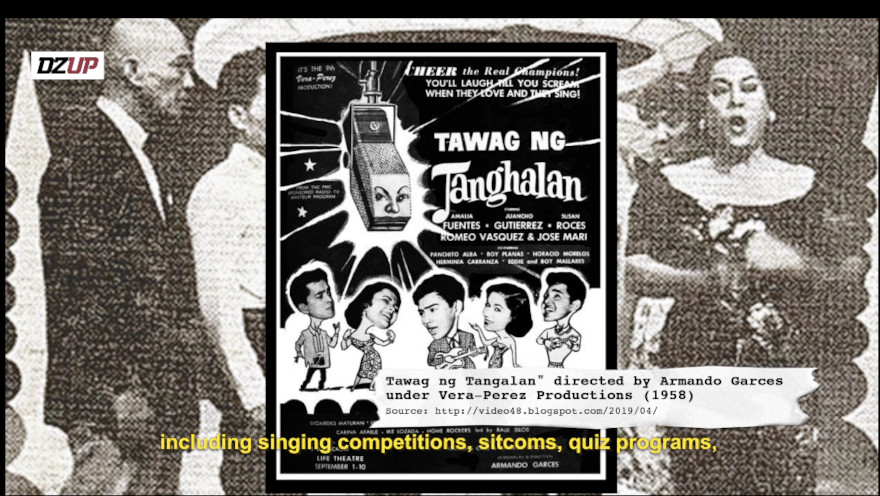
The documentary traces the early years of radio under American colonial rule (1898-1946) and under the Japanese occupation (1942-1945). Shaping the consciousness of the Filipinos according to American culture was done through radio: the spread of the English language and Western popular music in the country.
The early years
The first radio station (KDKA) in the United States started in Pittsburgh, Pennsylvania in 1920; less than two years later, former American soldier Henry Herman consolidated his three experimental stations into one and called it KZKZ, the country’s first radio station and the first in Asia. As a U.S colony, four-letter call signs that start with KZ were used.
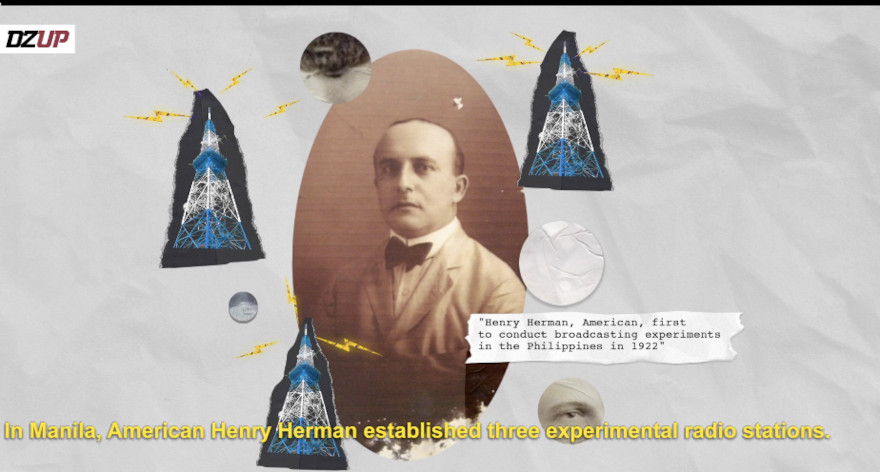
By late 1920s, there were two stations in Manila and one in Cebu. Department stores in Manila owned the prewar radio stations and used them to advertise their merchandise. For example, department stores IBeck was owned by DZIB; Erlanger & Galinger by KZEG. A good profit has always been the bottom line of the broadcast industry since its start.
Content: 1920s-1930s
Early radio was heavy on music, with an almost 70 percent share, especially American pop songs, dance music, and singing competitions. English was the predominant language used.
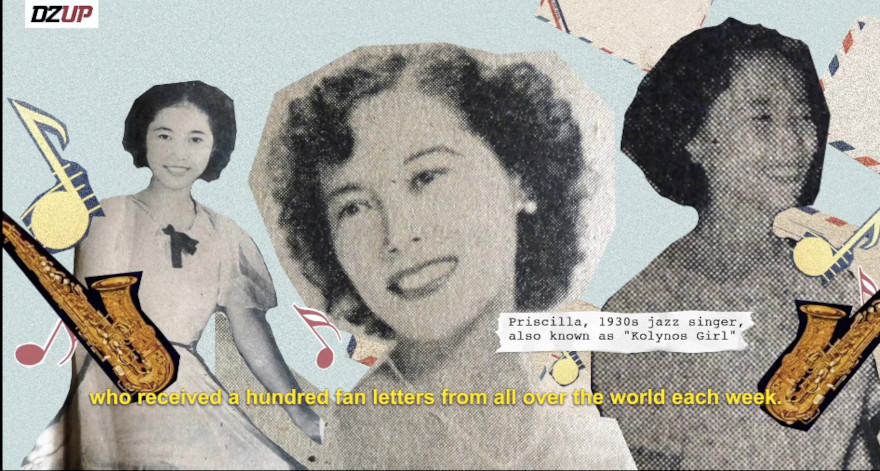
Filipinos quickly learned all the American songs, especially jazz. The most popular jazz singer in the 1930s was Priscilla, or the Kolynos Girl.
Program content included the playing of Filipino records; the live singing of kundiman and other Filipino songs; poetry readings and stage plays, short comedies, some interviews, sports competitions, a few minutes of news, and some live coverage of the National Assembly.
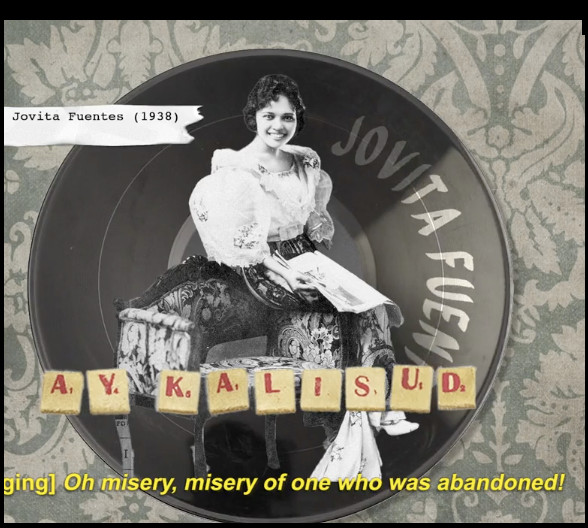
Some stations trained Filipino singers to perform live on radio; singers, pianists, bands, and even full orchestras performed live on air. Popular songs included Bituing Marikit , Kamuning by Atang de la Rama; and Ay Kalisud by Jovita Fuentes of Capiz, and a famous opera singer based in Europe. Both Fuentes and de la Rama were recognized as National Artists, in 1976 and 1979, respectively.
Advertisers buy radio time in blocks of 15 minutes and produce their own content, sparing the radio station of more expenses. Known today as blocktiming, this practice has persisted to this day.
By the mid-1930s, Tagalog had become strongly entrenched in radio, with a large audience of Filipinos who wanted to listen to songs by Filipino singers in their own language.
Under Japanese Occupation
Radio was also used as tool for Japan’s attempt to reshape the Filipinos, away from American culture and towards Asian culture, based on Japanese culture. Nihongo was taught in schools as well as on radio.
Under Japanese rule, radio programs became formal, serious, and rather annoying for Filipino taste such as the calisthenics program on Rajio Taiso, notes Enriquez. An unintended result of Japanese policies was the further strengthening of Tagalog and Filipino music on radio.
Major American companies allotted a large portion of their budget to radio advertising. They also introduced and funded a new format —the soap operas (heavy on advertisements of laundry detergents and bath soaps) serialized everyday with a continuing storyline.
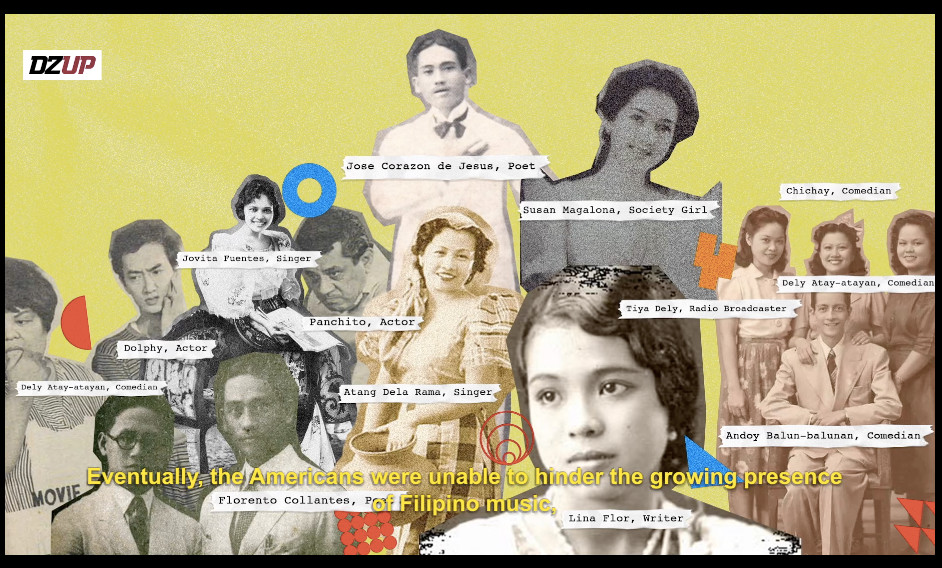
Drama and variety shows became the most effective in advertising daily needs such as soaps, cooking oil, toothpaste, etc. To entice viewers from all walks of life, Tagalog was used much more than English.
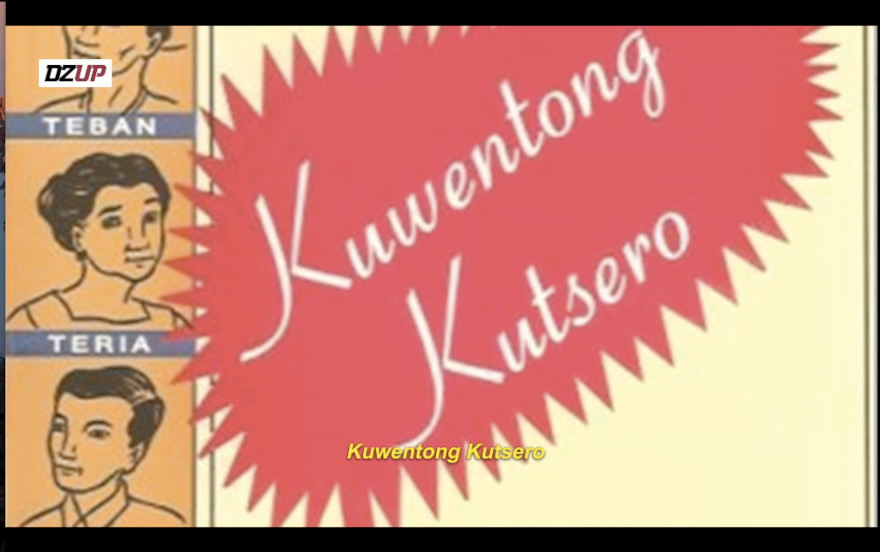
In the mid-1950s, the most popular live talent show was Kuwentong Kutsero, first aired in 1938, “a satire on Filipino manners, politics, customs and government.” (John A. Lent)
Music dominates
Many Filipino singers who sang in Tagalog became quite popular such as Ruben Tagalog. Outside of Manila, more radio stations proliferated, using Cebuano, Ilocano, Hiligaynon, or Ilocano.
The more than two decades after the war until the declaration of Martial Law in 1972 is considered the golden age of radio in the Philippines.
Today, Filipino languages and music continue to dominate in broadcasting (including TV and the new media). Simply, one’s own language and music remains in the innermost self, so difficult to erase and forget.
Radio reaches even the remotest part of the archipelago, untouched by television or the internet. In the latest Functional Literacy, Education, and Mass Media Survey (FLEMNS) of 2019—75.2 percent of Filipinos, 10 to 64 years old, listened to radio and 96.0 percent watched television.
Radio historian
The documentary is produced and written by Elizabeth L. Enriquez, PhD, and a professor of broadcast communication in UP Diliman. She is the author of Appropriation of Colonial Broadcasting: A History of Early Radio in the Philippines , 2009 and responsible for the pioneering volume on broadcast arts, CCP Encyclopedia on Philippine Arts , 2017.
As noted by the CCP Encyclopedia, broadcasting has forged “a nation of the everyday” and where “spaces for radical ideas have also been etched into everyday programming.”
Read other interesting stories:
Click thumbnails to read related articles.
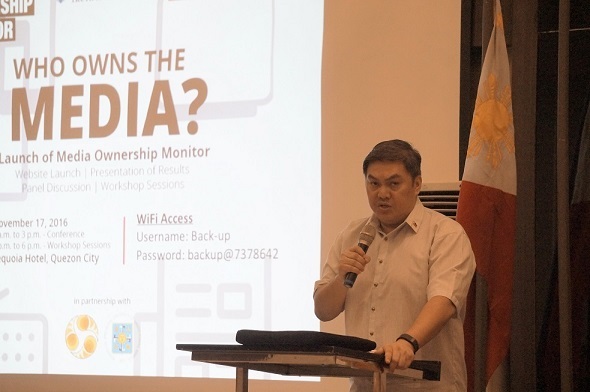
Duterte wants media as watchdog and partner
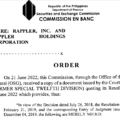
SEC reaffirms order on Rappler shutdown
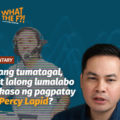
Habang tumatagal, bakit lalong lumalabo ang kaso ng pagpatay kay Percy Lapid?
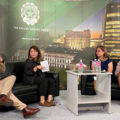
Study: PH online news media at ‘moderate level of disinformation risk’
- Share on Facebook
- Share on Twitter
- Share on Reddit
- Save to your Google bookmark
- Save to Pocket

Discovering the Evolution of Online Distance Learning in the Philippines
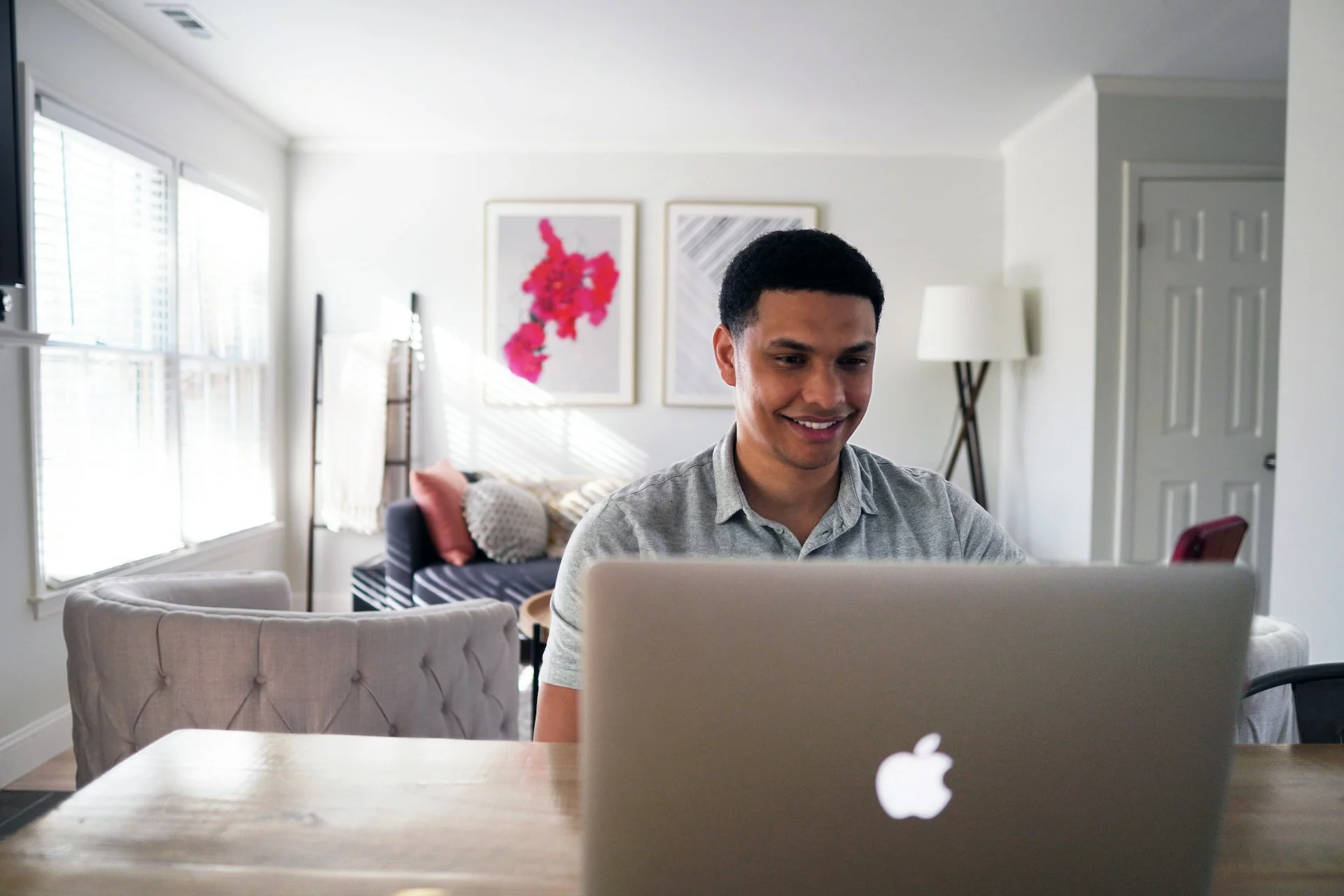
Like many countries, the Philippines has experienced advancements in the educational landscape because of the evolution of online distance learning. From the basics of online class correspondence to the sophisticated virtual classrooms of today, the development of e-learning has changed how students study.
With all the ways you can access educational resources nowadays, it’s good to look back and explore how learning transformed into what it is now. Journeying through the remarkable history of online distance learning in the Philippines can give you an appreciation of the key milestones, challenges, and impact of digital education on academia.
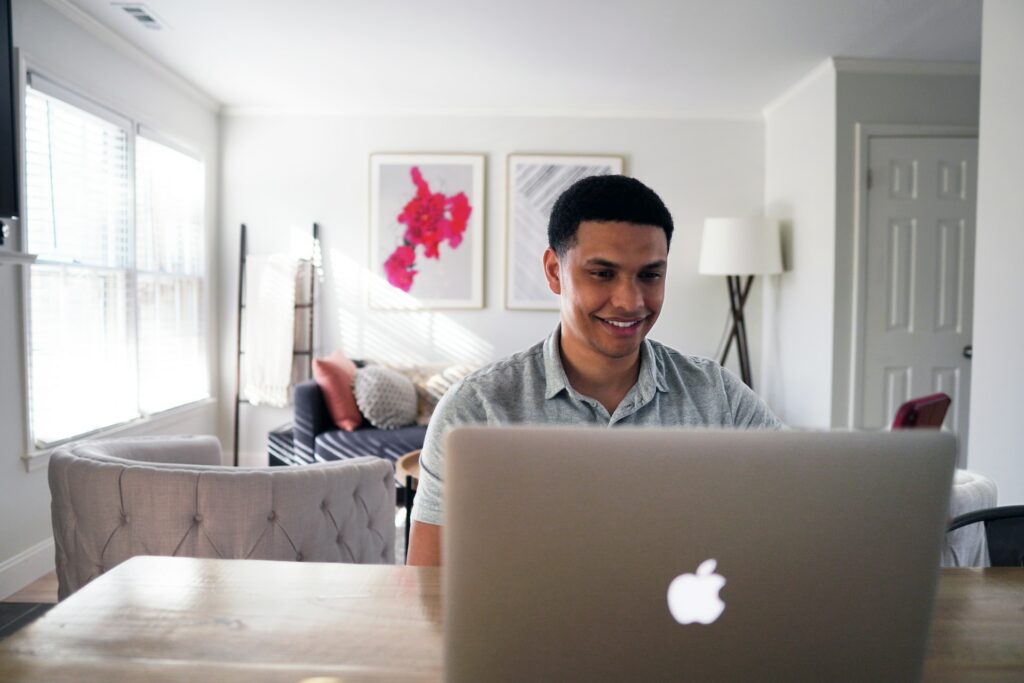
What is Online Distance Learning?
E-learning is an educational method that uses technology to facilitate students’ learning experience beyond the confines of physical classrooms. It allows you to access coursework, interact with instructors, and collaborate with peers through various digital platforms.
The key elements of e-learning include:
- Digital Platforms: Learning management systems (LMS), websites, or dedicated online platforms are used as virtual classrooms where course materials and activities are hosted.
- Flexible Access: Accessing course content and resources at your convenience, providing flexibility for those with diverse schedules and commitments.
- Interactive Tools: Online learning often integrates interactive tools like discussion forums, video conferencing, and instant messaging to facilitate communication and engagement within your class.
- Assessment Mechanisms: Assignments, quizzes, and exams are usually conducted online, with the ability to provide immediate scores and feedback.
- Resource Libraries: Digital libraries, e-books, videos, and other multimedia resources are readily available to supplement learning.
Overall, the benefits of online education are linked to its accessibility and the integration of new technological advancements into the various aspects of academia. By utilizing its key elements, you can maximize learning and achieve your academic goals.
How Did Online Distance Learning Evolve?
Online distance learning is not a recent development that happened overnight. In fact, its development has evolved over serval decades dating back to the early 20 th century. To understand the timeline, here’s a breakdown of technological advancements that influenced education:
1920s: Correspondence Courses
The concept of delivering educational materials through the postal service allowed students to access academic resources. Learners from different regions of the country received study materials and assignments by mail and then returned their completed work for assessment.
1930s: Radio Education
With the boom of radio broadcasts, it was used to transmit educational content to reach even more remote areas in the Philippines. What started with content like poetry readings, short comedies, and interviews, developed into the integration of more educational radio programs. Eventually, “School on the Air” segments began and facilitated access to quality education for Filipino learners who couldn’t attend traditional schools.
Nowadays, radio education is still being offered to provinces around the country. One of the most recent examples of school-on-the-air programs launched last 2020 by the Agricultural Training Institute (ATI) to continue their training program for rice farmers. The ATI’s goal is to educate Filipino farmers on rice production techniques and technologies.
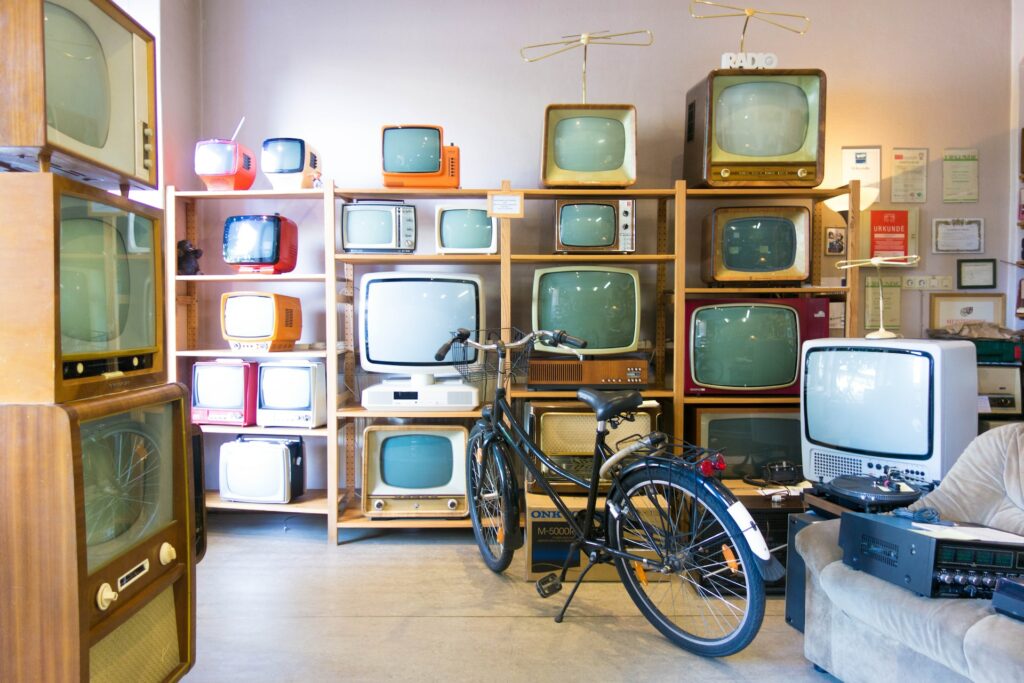
1950s to 1960s: Educational Television
In the early 50s, the Philippines released the first commercial television broadcast from the Alto Broadcasting System. At that time, broadcasters only showed American TV programs, serials, and movies.
However, popular radio shows that wanted to switch to television broadcasting started buying the rights of the airing American programs. So, shows like Tawag ng Tanghalan, Kuwentong Kutsero, and Student Canteen transitioned from radio to television––programs that later became staples in Filipino TV.
With the popularity of television, studios started developing and broadcasting more educational channels catering to younger audiences. Eventually, shows like Sineskwela, Batibot, Bayani, and many others were made to educate and entertain the youth.
1970s: Audio Tapes and Cassettes
As a form of development from radio broadcasts, the invention of audio tapes and cassettes gave people the ability to play, replay, and record new audio whenever they wanted. Through stereos and other forms of portable audio, Filipinos were able to keep songs and other recordings in their pockets.
With this innovation, audio tapes allowed students to collect and listen to recorded lectures and course materials at their own pace. This technological advancement marked a significant leap in distance learning accessibility.
1990s: Computer-Mediated Instruction
Moving forward from cassette tapes, the innovation of personal computers let the Philippines offer courses on CD-ROMs or via electronic mail. The development of compact discs made for a more portable and affordable alternative to cassette tapes––making it a more popular choice later on.
With the ability to store and send files, lectures were made more accessible to the population. This era marked the educational trend’s transition from analog to digital distance learning.
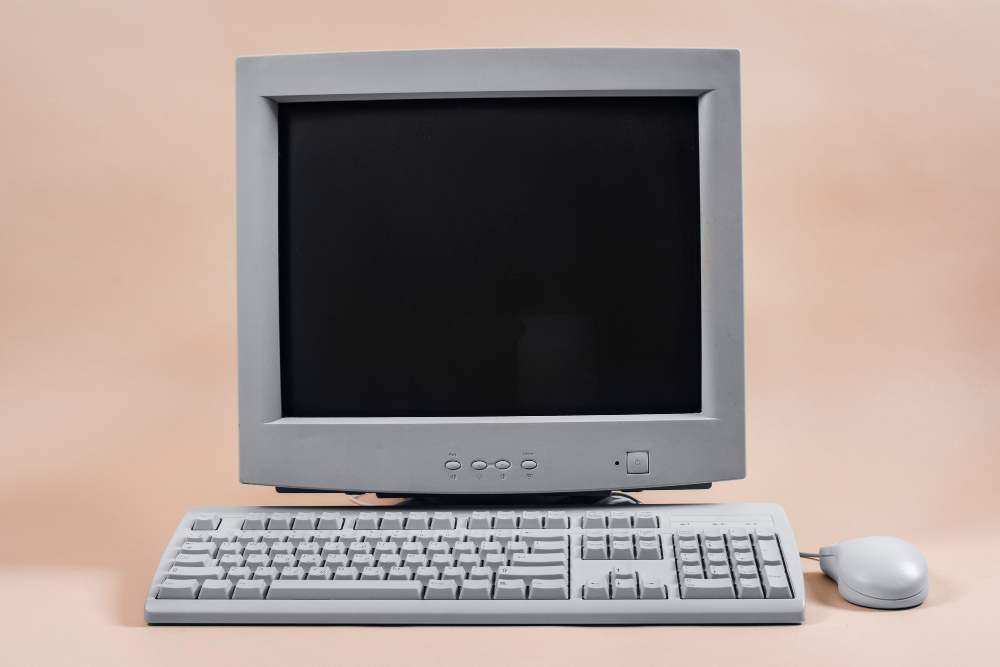
2000s: Growth of Online Learning
In the late 1990s to 2000s, the University of the Philippines Open University (UPOU) started the integration of online teaching and learning to their traditional program to support distance education in the country. Their system proposed a blended type of learning where students can opt to take classes digitally or in regular classrooms. It can be argued that this educational system was innovated by Polytechnic University of the Philippines’ Open University (PUP OUS) back in the 60s and adopted by UP in the 90s.
The movement from both institutions made education more accessible for Filipino students in the 21 st century.
2010s: The Massive Open Online Courses (MOOCs) Movement
As MOOCs like Coursera, edX, and Udacity emerged, they made high-quality and university-affiliated education available to Filipinos. Founded by Stanford University, Massachusetts Institute of Technology, and Harvard University, these MOOCs served as premier affordable education as it was generally offered for free.
And because of these learning platforms, local institutions were led to embrace MOOCs, adapting them into their own universities and expanding options for learners to receive education. For instance, the University of the Philippines adopted its own version of MOOCs by establishing Massive Open Distance e-Learning (MODeL) platform.
2010s to 2020: E-Learning Integration
The Philippine government recognized the potential of e-learning to improve access to education especially in the country’s remote areas. In support, initiatives like the Alternative Learning System (ALS) implemented online learning as a practical substitute for traditional instruction. It’s made to provide basic education for Filipinos who don’t have access to formal studies or out-of-school youth and adults.
2020 to Present: The Effects of the COVID-19 Pandemic on Education
Because of the COVID-19 lockdowns in 2020, most educational institutions were pushed to create curricula that cater purely to online education. And since then, even as society started going back to the norm of face-to-face meetings, e-learning remains to be part of school programs. More institutions are now offering students online courses at more academic levels with access to hybrid learning.
For instance, SHS distance learning has been gaining more attention from high school students as they move on to pursue further education. Because of this learning mode’s flexibility, more and more students prefer this academic style.
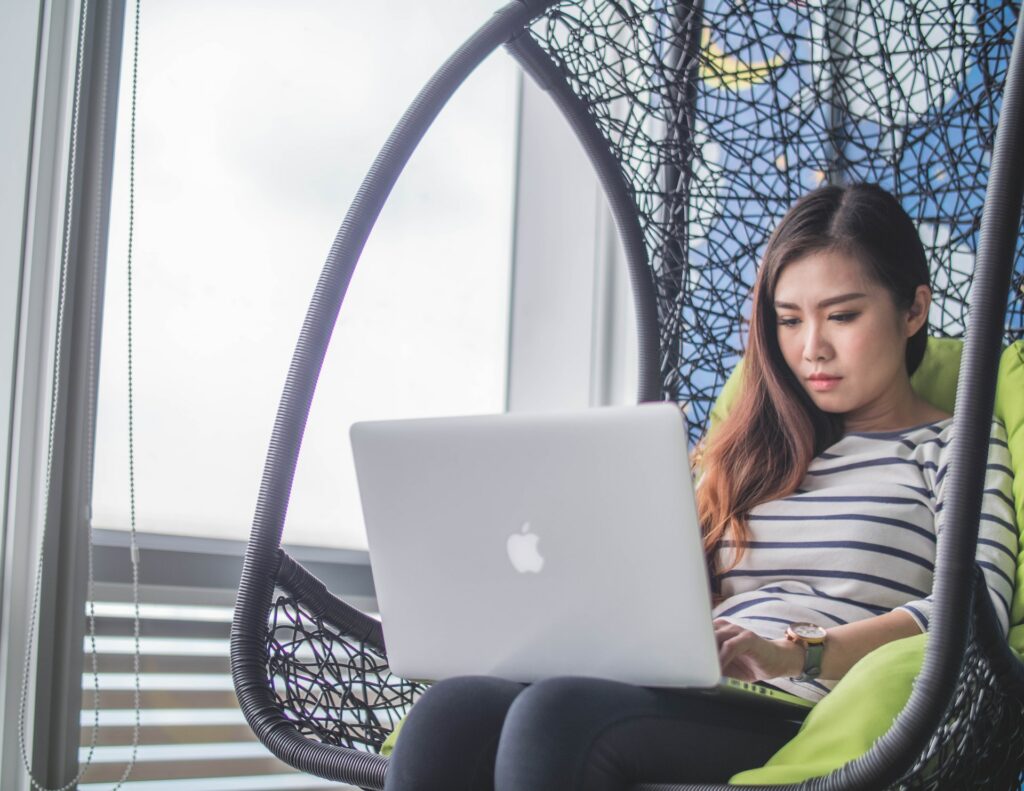

So, Is Online Distance Learning Good in the Philippines?
Generally, the advantages of online education make it a great option for Filipinos. Its accessibility to remote areas, its reduced cost, and increased flexibility make it easy for students to receive education. It’s an option Filipino students should explore and utilize to expand their knowledge.
As technology continues to advance and access to the internet improves, the potential for online distance learning in the Philippines is likely to grow. It’s up to the government, educational institutions, and learners to collaborate and address the challenges of online learning to ensure that Filipinos can access quality education in the digital age.
Achieving Academic Excellence with OEd Senior High School
The evolution of online distance learning in the Philippines is a testament to the nation’s commitment to education. From the humble beginnings of correspondence courses to the current digital classrooms, this mode of learning has enabled countless Filipinos to access education, regardless of geographical constraints.
Here at OEd, our belief is that online distance learning holds the promise of a more accessible, inclusive, and diverse educational future for the Philippines. We understand the value of digital learning in contributing to brighter careers for Filipinos.
So, in hopes of improving the accessibility of education within the country, we pride ourselves as pioneers in creating a premium online K-to-12 education system in the Philippines. With our curricula, we offer high-quality programs for the various academic tracks in senior high school––offering students more opportunities for further education.
Gain access to our programs through our website or contact us today to learn more about our course offerings!

AMA University Online Education (AMAOEd) is an online SHS education platform in the Philippines.
Quick Links
- Social Highlights
Academic Programs
- Online Basic Education
- Online Junior High School
- Online Senior High School
Academic Tracks
- Junior High Requirements
- Senior High Requirements
Contact Information
- [email protected]
- Mizheal +639171901136
- Stefany +639171803256
AMA GROUP OFFICIAL WEBSITES | OEd.com.ph | OnlinePostGrad.com 2021 © OEd Senior High School. All Rights Reserved.
Privacy Policy | Sitemap
Franco Rey L. Maraya Ramon Magsaysay Memorial Colleges, General Santos City, Philippines
The author of this study is a graduate of Bachelor of Science in Office administration Major in Computer Education (BS in Office Administration) with Bachelor of Secondary Education (BSEd) units. He is currently a Teacher I at Wali Integrated School, Division of Sarangani, Philippines. He underwent various seminars and trainings such as: Refresher Course for SRAA Technical Official, Virtual In-serve Training, and District training of Trainers on Radio-Based Instruction.
.................................................
..................................................
Education Journals
European Journal Of Physical Education and Sport Science
European Journal of Foreign Language Teaching
European Journal of English Language Teaching
European Journal of Special Education Research
European Journal of Alternative Education Studies
European Journal of Open Education and E-learning Studies
Public Health Journals
European Journal of Public Health Studies
European Journal of Fitness, Nutrition and Sport Medicine Studies
European Journal of Physiotherapy and Rehabilitation Studies
Social Sciences Journals
European Journal of Social Sciences Studies
European Journal of Economic and Financial Research
European Journal of Management and Marketing Studies
European Journal of Human Resource Management Studies
European Journal of Political Science Studies
Literature, Language and Linguistics Journals
European Journal of Literature, Language and Linguistics Studies
European Journal of Literary Studies
European Journal of Applied Linguistics Studies
European Journal of Multilingualism and Translation Studies
...................................................

- Other Journals
- ##Editorial Board##
- ##Indexing and Abstracting##
- ##Author's guidelines##
- ##Covered Research Areas##
- ##Announcements##
- ##Related Journals##
- ##Manuscript Submission##
IMPLEMENTATION, UTILIZATION, AND EFFECTS OF RADIO-BASED INSTRUCTION TOWARDS THE ACADEMIC PERFORMANCE OF GRADE 7 STUDENTS: BASIS FOR A PROPOSED RADIO-BASED EDUCATION ON THE GO PROGRAM
Article visualizations:
Acido, B., Muega, G., & Oyzon, L. (2018). Elements of a radio-based literacy program: towards a community-responsive pre-service teacher education. Asian Journal of Social Sciences and Humanities, 2(1), 196-201.
Akcil, U., Tosin, O., & Köprülü, F. (2022). Content analysis of the articles published in educational technology. Near East University Online Journal of Education, 5(1), 26-35.
Akintayo, A. (2018). A survey of the Learning and Teaching Problems of History in Secondary Schools in Ekiti Central Local Government Area of Ondo State of Nigeria. An Unpublished B. Ed Thesis.
Allotey, K. (2018). Communication Media Usage and Uptake Patterns of Inoculant Technology in Tolon District and Savelegu Municipal of The Northern Region, Ghana (Doctoral dissertation).
Ambeth, I., & Saravanakumar, N. (2020). Open and distance learning (ODL) education system: past, present and future-a study of an unconventional education system. Journal of Xi'an University of Architecture & Technology, 7(3), 77-87.
Anoda, S. (2020). Experiences of Teachers, Parents and Students in Learning Delivery Modalities: A Qualitative Inquiry.
Baccal, S., & Ormilla, G. (2021). The implementation of Alternative Learning System in public schools in Isabela, Philippines. EDUCATUM Journal of Social Sciences, 7(1), 19-29.
Bandura, A. (1999). Social cognitive theory: An agentic perspective. Asian journal of social psychology, 2(1), 21-41.
Bandura, A., & Walters, R. H. (1977). Social learning theory (Vol. 1). Prentice Hall: Englewood Cliffs.
Bates, T. (2019). Broadcasting in education: An evaluation (Vol. 7). Constable Limited.
Bozkurt, A. (2020). Educational technology research patterns in the realm of the digital knowledge age. Journal of Interactive Media in Education, 2020(1).
Brookfield, S. (2016). Media power and the development of media literacy: An adult educational interpretation. Harvard Educational Review.
Chandar, U., & Sharma, R. (2018). Bridges to effective learning through radio. International review of research in open and distributed learning, 4(1), 1-14.
Cooke, M., & Romweber, T. (2017). Radio advertising techniques and nutrition education: A summary of a field experiment in the Philippines and Nicaragua. Manoff International.
Damani, K., & Mitchell, J. (2020). Rapid evidence review: radio. EdTech Hub, available at: https://edtechhub.org/wp-content/uploads/2020/07/Rapid-Evidence-Review_-Radio-1. pdf (accessed 5 May 2021).
DepEd Order No. 8, s. 2015 Policy Guidelines on Classroom Assessment for the K to 12 Basic Education Program retrieved from www.depep.gov.ph on October 2021.
DepEd Order No. 31, s. 2020 Interim Guidelines for Assessment and Grading in Light of the Basic Education Learning Continuity Plan retrieved from www.deped.gov.ph on October 2021.
Elliot, V., & Lashley, L. (2017). The effectiveness of Interactive Radio Instruction (IRI) within selected primary schools in region number four (4). Social Science Learning Education Journal, 2(9).
Fontanos, N., Gonzales, F., Lucasan, K., & Ocampo, S. (2020). Revisiting flexible learning options (FLOs) in basic education in the Philippines: Implications for senior high school (SHS). UP CIDS Education Research Program.
Garrison, R. (1990). An analysis and evaluation of audio teleconferencing to facilitate education at a distance. American Journal of Distance Education, 4(3), 13-24.
Grady, C., Iannantuoni, A., & Winters, S. (2021). Influencing the means but not the ends: The role of entertainment-education interventions in development. World Development, 138, 105200.
Ho, J., & Thukral, H. (2019). Tuned in to student success: Assessing the impact of interactive radio instruction for the hardest-to-reach. Journal of Education for International Development, 4(2), 34-51.
Ibrahim, B., & Mishra, N. (2016). College Radio as a Mechanism for Participatory Learning: Exploring the Scope for Online Radio Based Learning among Undergraduates. Higher Learning Research Communications, 6(1), 21-34.
Igwenagu, C. (2016). Fundamentals of research methodology and data collection. LAP Lambert Academic Publishing.
Jacob, U., & Ensign, M. (2020). Transactional radio instruction: Improving educational outcomes for children in conflict zones. Springer Nature.
Jacob, U., & Ensign, M. (2020). Where Schools Are Broken: Radio for Education in Crises Societies. In Transactional Radio Instruction (pp. 53-74). Palgrave Macmillan, Cham.
Kinder, S. (2016). Audio-visual. Materials and techniques/2nd edition, American Book Company New York.
Kurrien, Z. (2018). The use of educational radio for improving the quality of teaching and learning in government regional medium elementary schools. Consultation on National Policy on ICTs in School Education.
Levy, S. (2016). Factors to consider when planning online distance learning programs in higher education. In Online Journal of Distance Learning Administration, Spring.
Magolda, B. (2016). Creating contexts for learning and self-authorship: Constructive-developmental pedagogy. Vanderbilt University Press.
Mahdy, A. (2020). The impact of COVID-19 pandemic on the academic performance of veterinary medical students. Frontiers in veterinary science, 7, 732.
Moloo, K., Khedo, K., & Prabhakar, V. (2018). Critical evaluation of existing audio learning systems using a proposed TOL model. Computers & Education, 117, 102-115.
Nguyen, T. D., Shih, M. H., Srivastava, D., Tirthapura, S., & Xu, B. (2021). Stratified random sampling from streaming and stored data. Distributed and Parallel Databases, 39, 665-710.
Olakulehin, K. (2016). Impact of Instructional Radio Delivery Mode on Academic Achievement of Distance Learning Students in Computer Science. US-China Education Review, 6(12), 688-698.
Pablo, C. (2021). Competencies of Alternative Learning System Mobile Teachers in Schools Division of Nueva Ecija.
Paler-Calmorin, L. (2015). Research Methods and Thesis Writing. International Journal of Marketing and Technology, 5(7), 1-17.
Park, E. (2018). On social control and collective behavior: Selected papers (Vol. 275). Chicago: University of Chicago Press.
Piaget, J. (1981). Intelligence and affectivity: Their relationship during child development. (Trans & Ed TA Brown & CE Kaegi). Annual Reviews.
Piaget, J. (1896). Theory of cognitive development. Geneva, Switzerland: International Bureau of Education, University of Geneva.
Prahmana, I., Hartanto, D., Kusumaningtyas, A., & Ali, M. (2021). Community radio-based blended learning model: A promising learning model in remote area during pandemic era. Heliyon, 7(7), e07511.
Raza, M. (2022). Interactive radio instruction–a legacy of COVID-19 for marginalized adolescent girls of Baluchistan. Journal for Multicultural Education.
Salendab, A., & Cogo, A. (2022). Implementation of alternative learning system: basis for policy review and recommendation. Journal of Positive School Psychology, 5457-5467.
Sintema, J. (2020). Effect of COVID-19 on the performance of grade 12 students: Implications for STEM education. Eurasia Journal of Mathematics, Science and Technology Education, 16(7), em1851.
Stabback, P. (2016). What makes a quality curriculum? In-progress reflection no. 2 on" current and critical issues in curriculum and learning". UNESCO International Bureau of Education.
Theroux, M. (2017). Instructional Radio Reconsidered: An International Perspective. Center for International Education Hills House South University of Massachusetts Amherst.
Valdez, G., Paulican, B., & Adriatico, J. (2018). Exploring the Alternative Learning System Radio-based Instruction. Asia Pacific Journal of Social and Behavioral Sciences, 15.
van Cappelle, F., Chopra, V., Ackers, J., & Gochyyev, P. (2021). An analysis of the reach and effectiveness of distance learning in India during school closures due to COVID-19. International Journal of Educational Development, 85, 102439.
Vyas, V., Sharma, C., & Kumar, A. (2020). Educational radio in India. Turkish Online Journal of Distance Education, 3(3).
Wang, X., & Cheng, Z. (2020). Cross-sectional studies: strengths, weaknesses, and recommendations. Chest, 158(1), S65-S71.
Yayen, D., & Marensil, T. (2021). Learning thru radio: the effectiveness of radio-based instruction (RBI) to grade 6 pupils and parents of barangkas elementary school.
- There are currently no refbacks.
Copyright © 2015-2023. European Journal of Education Studies (ISSN 2501 - 1111) is a registered trademark of Open Access Publishing Group . All rights reserved.
This journal is a serial publication uniquely identified by an International Standard Serial Number ( ISSN ) serial number certificate issued by Romanian National Library ( Biblioteca Nationala a Romaniei ). All the research works are uniquely identified by a CrossRef DOI digital object identifier supplied by indexing and repository platforms. All authors who send their manuscripts to this journal and whose articles are published on this journal retain full copyright of their articles. All the research works published on this journal are meeting the Open Access Publishing requirements and can be freely accessed, shared, modified, distributed and used in educational, commercial and non-commercial purposes under a Creative Commons Attribution 4.0 International License (CC BY 4.0) .


College of Development Communication
Honoring Dr. Felix Librero: A Pioneer of Development Broadcasting and Development Communication
The UPLB College of Development Communication mourns the passing of one of its pillars, Dr. Felix Librero on March 16, 2021. He was 77.
Sir Lex, as he was fondly called, was a pioneer in the field of development broadcasting and development communication. He was one of the first broadcasting staff members of Radyo DZLB, the country’s first educational and development-oriented radio station, and became its station supervisor in 1968 and manager in 1975.
Radyo DZLB, one of the milestones of the Department of Agricultural Information and Communications of the College of Agriculture in the 1960s, primarily aimed to broadcast research-based farm information and serve as a laboratory for agricultural communication students. The station later on won a KBP Golden Dove Award for Best AM Station in 1994 and a Catholic Mass Media Award for Best Educational Radio Program in 2010.
Dr. Librero worked with other pioneers in development communication such as Dr. Nora C. Quebral and helped establish the world’s first Department of Development Communication (DDC) in 1974. He became chair of DDC in the 1980s, and then served as the first director of the Institute of Development Communication in 1987, which is now the College of Development Communication.
As a pioneer in the field of development communication, Dr. Librero contributed much to the body of knowledge in development broadcasting and educational communication. He graduated with a BS degree in Agriculture, major in Agricultural Communications, and an MS degree in Development Communication from UPLB, and a PhD degree in Instructional Systems Technology from Indiana University, USA.
He taught and conducted research and extension projects at UPLB from the 1960s to the early 2000s when he became the Chancellor of the UP Open University.
His legacy remains alive at CDC and UPLB. As we now rehabilitate the DZLB AM radio tower, his teachings and expertise in development broadcasting resonate, in carefully identifying target stakeholders before developing radio programs, in serving as a voice of the audiences, and a visionary in helping audiences to help themselves.
From the UPLB College of Development Communication, our deepest gratitude, Dr. Librero!
Published by Devcom
View all posts by Devcom

Educational Radio Stations from Philippines

Radio stations in Philippines by city:
Discover all the best Educational radio stations from Philippines! Whether you arrived here looking for a specific station or on a simple exploratory mission, on this page you will find a comprehensive list of all the AM, FM, and online radio stations in Philippines under the genre Educational. Plus, they are sorted by their overall number of listeners to help you gauge how popular they are.

Meet our radio stations

Listen to live radio stations worldwide

- Good Balita
- Good Pinoys
- Good Travel
- Good School
- Good Advice
- Good Business
- Good Inspiration
- Good Savings
- Armando O. Bartolome
- Agnes Hannah Balibay
- Angie Quadra Balibay
- Chinkee Tan
- Mike Grogan
- Qjiel Mariano
- Rene Nonoy Molina
- Trixie Esguerra
- Wilson Lee Flores
- Filipino Pride Advocate
- Filipino Pride Newsmakers
- Week in Review
- My Pilipinas
- Share Your Proud Pinoy News
- GNP Advocates

GoodNewsPilipinas.com Triumphs with Gold Anvil Award: A Testament to Filipino Media…

Embracing a New Era: GoodNewsPilipinas.com’s Trailblazing Journey to the Anvil Awards

Discover Philippine Education Excellence: Unveiling the Top 10 Good School Stories…

Discover Filipino Athletic Excellence: Unveiling the Top 10 Inspiring Sports Stories…
Listen: university of the philippines radio dzup on world college radio day.
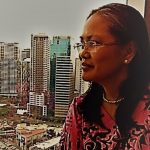
The University of the Philippines’ DZUP Radio Station is representing the country as a showcase campus radio’s fearless programming on World College Radio Day (WCRD) this Friday.
The state university flagship radio station is among the 24 college radio stations broadcasting and streaming live worldwide on the 24-hour Global Marathon on October 2, 2020.
The “No holds barred college radio content for 24 hours” event of WCRD 2020 had almost 600 college radio stations in 38 countries on 6 continents registering for the limited slots on the programming.
World College Radio Day is held annually every October and aims to raise awareness about the value and legacy of college radio stations across the world. The 10th edition of WCRD carries the theme “Global Solidarity Rocks,” and is held amid the ongoing COVID-19 pandemic.
The organizers “believe that college radio is one of the last remaining bastions of creative radio programming, free from the constrictions of having to be commercially viable, and a place where those involved in its programming believe passionately in its mission.”
“College radio is the only free live medium brave enough to play unsigned, local, and independent artists on a regular basis. Indeed, many famous and successful bands today, owe their initial break to being played on college radio. Put simply, college radio is an important part of the media landscape because of its unique and fearless programming,” stated WCRD.
DZUP 1602 AM broadcasts from UP Diliman and is managed by the Broadcast Communication Department of the College of Mass Communication.
DZUP Radio Iskool
DZUP’s 1-hour show Radio Iskool was streamed live from 10-11 AM and tackled the power of social media in uniting people in the midst of the pandemic and the challenges of misinformation and disinformation.
The Filipino hosts of the DZUP show shared personal experiences about using social media before and during the pandemic. The show featured interviews from experts about matters that deal with the challenges of the current public health emergency.
Joshua Danac of Scientists Unite Against COVID 19 shared how best to assess the veracity of the information given out during the public health crisis.
Aaron Viernes of the UP History Department presented how to view the issue of historical revisionism published on media.
UP Journalism professor and Media Asia editor Danilo Arao discussed how to manage troll accounts and their attempts at controlling public discussion on societal issues and the propagation of “fake news” to confuse truth-seekers.
The program also featured expert tips from Dr. Adelaida Mayo of the UP College of Home Economics on how to best work from home, using computers, mental health, and making social media a safe space.
DZUP has been awarded multiple Golden Dove trophies from the Kapisanan ng mga Brodkaster ng Pilipinas (KBP) and the Catholic Mass Media Awards.
The UP campus radio is considered the leading college radio station of the Philippines and initiated the Philippine College Radio Congress that pioneered in gathering and starting an association of university and college radios across the archipelago.
In 2018, Philippine college radios joined the World College Radio Day via DZUP 1602 AM of the University of the Philippines – Diliman, including DLSU-D 95.9 Green FM of De La Salle University – Dasmariñas, Green Giant FM of De La Salle University – Manila, Radyo Katipunan 87.9 of Ateneo de Manila University, UST Tiger Radio of the University of Santo Tomas, and CLSU 107.3 FM of Central Luzon State University.
DZUP first broadcasted in 1958 and operates with a Philippine broadcast franchise granted to the UP System under the Republic Act 816 that allows the university to construct and operate radio and TV broadcasting stations for educational purposes within the university and other areas within the scope of its operations.
The UP System’s franchise renewal for another 25 years was recently approved by the House of Representatives. It now awaits the approval of the Senate and the Office of the President.
LISTEN here to recorded broadcast and SEND CONGRATULATIONS in the comments below to the UP DZUP Radio Station for being showcased on World College Radio Day!
Want to know how to be a Proud Pinoy? Like, Follow, Subscribe to GoodNewsPilipinas.com, and our socials on Facebook , Twitter , Instagram , Good News Pilipinas! TV on YouTube, for new story notifications, and e-mail newsletters for updates on more Filipino Pride stories.

- Broadcast Communication Department
- College of Mass Communication
- Philippine education
- University of the Philippines
- World College Radio Day
Get Your Dose of Good Vibes!
Power Up Your Positivity! Catch all the Good-Vibes! Join the GoodNewsPilipinas.com VIP list and get your daily dose of sunshine and Pinoy Pride! Unwrap stories that put Filipino awesomeness in your life! CLICK the subscribe button for our e-newsletter and turn your inbox into a fiesta of feel-good news! Inspire your day, fuel your pride! 🇵🇭✨
RELATED ARTICLES
List: up, admu, dlsu best subjects on qs world university rankings, up law secures double victory as champions of stetson environmental and jessup political rights global moot court competitions, up dominates edurank top 100: leading philippine universities revealed here, top stories.
How to Track your Philippine National ID delivery

How to Check Your Voter Status for Philippine Elections

LIST: 15 Philippine paint brands with lead safety United States certification

Philippine Innovation Unleashed: Top 10 Good Tech Stories of 2023 on GoodNewsPilipinas.com

Filipino Food Sensation Abi Marquez Takes Home Webby Awards for Social Media Mastery
Editor picks, goodnewspilipinas.com secures third consecutive nomination at lasallian scholarum awards, list: 2024 lasallian scholarum awards finalists, goodnewspilipinas.com scores 3rd..., winners list: anvil awards for outstanding business communication advocating..., goodnewspilipinas.com triumphs with gold anvil award: a testament to..., goodnewspilipinas.com vies for prestige at the 59th anvil awards:..., popular posts, list: 15 philippine paint brands with lead safety united..., philippine innovation unleashed: top 10 good tech stories of..., filipino food sensation abi marquez takes home webby awards..., popular category.
- Good Balita 1522
- Good Show 1358
- Good Sport 944
- Good Pinoys 925
- Good Advice 644
- Good Travel 604
- Good Tech 560
- Good Business 534
- Good School 511
- Good Deed 489
- Good Inspiration 299
- Good News Pilipinas! TV 79
- Good Savings 46
- Good MSME 46

Good News Pilipinas is a news and information website that highlights the good in the Filipino and the Philippines.
© 2024 GoodNewsPilipinas.com
Privacy Overview

South Carolina ETV
- TV Schedule
- For Nature Lovers
- By The River
- Citizen Better
- Coastal Kingdom
- Documentaries
- ETV Classics
- From the Sky
- Making It Grow
- SCETV National Programs
- Radio Schedule
- Bright by Text
- Meet the Helpers
- The Cool and the Strong
- Carolina Classrooms
- Lesson Plans and Curriculum
- Recertification Courses
- Services for Agency Partners
- Services for School Districts
- Services for the Public
- Live Streams
- This Week in SC
- PBS NewsHour
- Let's Go!
- Reconstruction 360
- RiverVenture
- SCETV Quizzes
- Stories By Regions
- Summer Interns
South Carolina ETV and Public Radio shares resources during Financial Literacy Month
- Share via Twitter
- Share via Facebook
- Share via Email
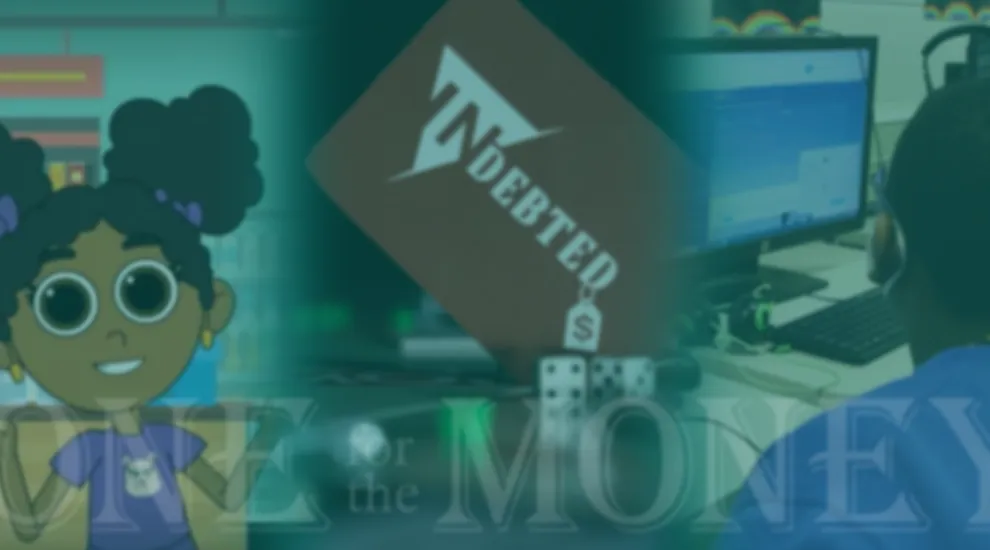
- South Carolina Public Radio and College of Charleston announce “Teachable Moments”
- “Reel South” shares 10 new films with audiences nationwide
- Sea turtle stranding season begins with influx of patients at South Carolina Aquarium
During April, South Carolina ETV and Public Radio (SCETV) highlighted programming aimed at empowering individuals with crucial financial knowledge and insights. SCETV has created a hub for financial literacy resources with its One for the Money initiative serving as a central source for programs, educational resources and lifelong learning about economics and financial well-being.
One noteworthy program is the podcast series InDebted , hosted by Scott Morgan and produced by SC Public Radio. Released in 2023, this eight-part series delves into the complex issue of debt in the Palmetto State, exploring facets such as medical debt, student loans, short-term loan services and financial literacy. Backed by research from the Urban Institute, InDebted reveals South Carolina's prominence among counties burdened with excessive liabilities. InDebted shines a spotlight on real stories of South Carolinians navigating this challenging financial landscape.
Marketplace , an NPR program airing on SC Public Radio weekdays at 6:30 p.m., offers listeners a comprehensive understanding of daily business and economic news. Beyond numbers, this program provides invaluable context, with reporters across the globe engaging with CEOs, policymakers and ordinary individuals striving for financial stability. For those pressed for time, the Marketplace Morning Report delivers a condensed yet informative digest of the day's economic happenings weekdays at 6:50 and 8:50 a.m.
South Carolina ETV’s Carolina Classrooms is a series designed to inform teachers, parents and citizens about key educational initiatives in the state. In an episode focusing on financial literacy which premiered in 2022, viewers gain insights into programs and classes teaching students fundamental money management skills necessary for financial independence. Through visits to Central High School in Chesterfield County and Elloree Elementary School in Orangeburg County, viewers witness firsthand how educators seamlessly integrate financial literacy lessons across different grade levels and subjects.
Additionally, SCETV's online educational resource knowitall.org offers a wealth of interactive content for pre K-12 learners. Among its offerings is KidsECON , a program catering to grades K-3. KidsECON follows Laila, Ella and Jayden as they embark on adventures with their mentor Peggy exploring concepts such as banking, saving money and the importance of financial planning.
During Financial Literacy Month and all year long, SCETV remains committed to fostering a more financially savvy and empowered community through informative, engaging programming. For more information on financial literacy resources, visit www.scetv.org/oneforthemoney .
“As we observe Financial Literacy Month, SCETV remains steadfast in our commitment to equipping individuals with the knowledge and skills necessary to navigate the complexities of personal finance. Through our educational programming and collaborative efforts, we aim to empower our communities with the tools needed to achieve financial independence and security.” –SCETV Assistant General Manager Stephanie Cook
FAST FACTS
- During April, SCETV highlighted programming aimed at empowering individuals with crucial financial knowledge and insights.
- SCETV has created a hub for financial literacy resources with its One for the Money initiative.
- InDebted is an eight-part podcast delving into the complex issue of debt in the Palmetto State.
- Marketplace offers listeners a comprehensive understanding of daily business and economic news.
- A 2022 episode of Carolina Classrooms focused on financial literacy, sharing insights into programs and classes teaching students fundamental money management skills necessary for financial independence.
- KidsECON follows Laila, Ella and Jayden as they embark on adventures with their mentor Peggy exploring concepts such as banking, saving money and the importance of financial planning.
- For more information on financial literacy resources, visit www.scetv.org/oneforthemoney .
About South Carolina ETV and Public Radio South Carolina ETV and Public Radio (SCETV) is the state's public educational broadcasting network. SCETV amplifies South Carolina voices, provides educational experiences and strengthens communities, while working toward creating a stronger, more connected and informed South Carolina. In addition to airing local programs, such as Carolina Classrooms, Making It Grow, and This Week in South Carolina , SCETV also presents multiple programs to regional and national audiences, including By The River, After Action, Reconnecting Roots, Reel South, Somewhere South, Yoga in Practice, Downing of a Flag and How She Rolls . In addition, SC Public Radio produces the national radio production, Chamber Music from Spoleto Festival USA .
Media Contact: Landon Masters [email protected] 803-737-3337
South Carolina ETV and SC Public Radio shares resources during Financial Literacy Month ( PDF )
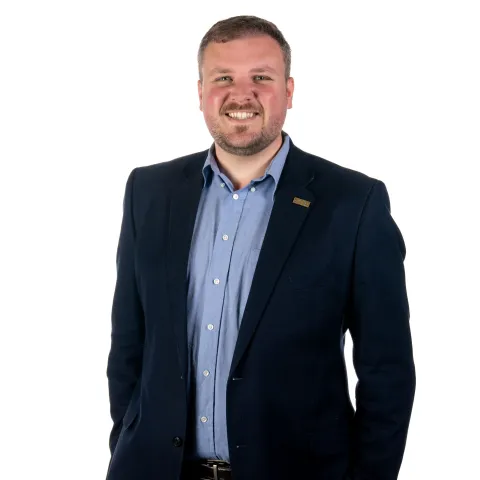
Recent Articles
- South Carolina ETV digital series “From the Sky” completes its aerial tour of South Carolina during final season
- Skip to main content
- Keyboard shortcuts for audio player
We, the voters
Where gun violence is common, some students say physical safety is a top concern.

Meg Anderson

The busy halls of North Community High School in Minneapolis in between classes. Caroline Yang for NPR hide caption
The busy halls of North Community High School in Minneapolis in between classes.
The students at North Community High School in Minneapolis have seen a lot. Some things, morbid curiosities: a bullet, freshly fired, spinning and melting the rubber on the track surrounding the school's football field.
Others, much more painful: the murder of Deshaun Hill Jr., shot and killed two years ago just blocks from the school. He was 15 years old, and the quarterback of the football team.
"That was my best friend, so we did everything with each other. I feel like that's the toughest thing, just knowing that he's not physically by my side anymore," senior Kahlil Brown says.
Last spring, another member of the football team was shot in both legs. He survived.
"It is not normal. It shouldn't be seen as normal. But we go through it so much that it is normal here," senior Jalen Beard says.

Kahlil Brown, 18, says teammate Deshaun Hill Jr., the student and quarterback who was shot and killed in 2022, was his best friend. Brown, shown posing for a portrait at the North Community High School football field in Minneapolis on April 9, will attend St. Olaf College in the fall. Caroline Yang for NPR hide caption
Kahlil Brown, 18, says teammate Deshaun Hill Jr., the student and quarterback who was shot and killed in 2022, was his best friend. Brown, shown posing for a portrait at the North Community High School football field in Minneapolis on April 9, will attend St. Olaf College in the fall.
Across the country, millions of young people are enduring this same reality: Firearm injuries are the leading cause of death for children and teens over age 1 nationwide.
The federal government is investing billions of dollars to combat this problem. But on the north side of Minneapolis, some students living under the threat of gun violence say there's a disconnect between what the government is offering and what they say they need.
"We needed that police officer at our school and they took it out"
Gun violence affects children and teenagers in devastating ways, says Sonali Rajan, an associate professor at Columbia University's Teachers College. That goes far beyond the physical harm guns can cause.
"Witnessing firearm violence, surviving a shooting, hearing gunshots," Rajan says. "There's a real range of experiences that we have to consider when we think about its impacts and the emotional trauma that goes hand-in-hand with that — nightmares, anxiety, difficulty concentrating, typical symptoms we might associate with post-traumatic stress disorder."
Students exposed to gun violence are less likely to do well in school and less likely to graduate . What's more, the rate of firearm deaths for Black children is six times higher than it is for white children. In Minneapolis, students at North High are well aware of those effects.
"If you're outside, you don't really feel comfortable, you don't really get to relax," Beard says. "Even if you're not the one doing it, even if you're not a part of no gang, nothing like that. But you could still end up being the one on the ground."

A portrait of Deshaun Hill Jr. hangs outside on the fence surrounding the North Community High School track and football field in Minneapolis. Caroline Yang for NPR hide caption
A portrait of Deshaun Hill Jr. hangs outside on the fence surrounding the North Community High School track and football field in Minneapolis.
In response, the Biden administration is awarding $1 billion across the next several years as part of the Bipartisan Safer Communities Act . That money aims to increase the number of mental health professionals in schools.
As part of the same legislation, the administration distributed about another $1 billion in grants to create what it calls "safer and healthier learning environments," employing a wide range of strategies — including anti-bullying and violence prevention programs, staff training and metal detectors.
Minneapolis Public Schools will receive at least $500,000 of this federal aid, much of which is focused on drug and alcohol prevention. The district plans to apply for the mental health grants and has received other state and federal funding specifically for preventing gun violence.
When it comes to more mental health resources, Beard says he would welcome that extra support, as long as a counselor can truly relate.
"You don't want to talk to a stranger who has never been in this situation, who never had one of their best friends pass away at 15," Beard says. "They wouldn't understand. And it would feel like I'm talking to an alien, basically."
In 2020, George Floyd was murdered by a police officer in this same city. Shortly after, the school district ended its contract with the city's police — and pulled school resource officers from its buildings.
"So now the police is out of our schools," says Brown, the senior whose best friend was killed. "We needed that police officer at our school and they took it out."
The school still has a security monitor, but that person is not a sworn officer. The security monitor can't arrest people and doesn't carry a weapon. Students say they don't want to be overpoliced, much less by officers they don't know. But at North, the school resource officer was also the head coach of the football team — and still is.
"That's a trusted person," Beard says. "If I knew my coach was out there protecting me, I'm fine."

Jalen Beard, 18, a friend and teammate of Deshaun Hill Jr., stands by the football field at school. Beard plans to attend St. Olaf College. Caroline Yang for NPR hide caption
Jalen Beard, 18, a friend and teammate of Deshaun Hill Jr., stands by the football field at school. Beard plans to attend St. Olaf College.
Studies have shown the presence of police can criminalize the school space and serve as a pipeline into the criminal justice system, says Rajan, the Columbia researcher. Still, she says, the need for real physical safety is valid.
"We can't necessarily employ a cookie cutter approach to gun violence prevention," Rajan says. "There are 51 million children in our public school system right now. So there is a lot of nuance here we have to contend with."
"What are we doing to prevent that violence from happening at all?"
Every morning, Principal Friestleben stations herself in the hallway to greet students. She says that's intentional: Structure and consistency communicate to students that they're safe.
"My children are walking in with generational and personal experience of not being protected and not being valued and centered," she says.

North Community High School Principal Mauri Friestleben stands in a newly renovated classroom on April 9. Caroline Yang for NPR hide caption
North Community High School Principal Mauri Friestleben stands in a newly renovated classroom on April 9.
Educators need to understand that even though they can't control what happens in the neighborhood, schools can make a real difference in student well-being, says Dan Flannery, a professor who researches gun violence at Case Western Reserve University.
"If you have a positive school climate and culture, if kids feel attached to the school, they're going to have a much more positive experience," Flannery says. "You need to have a commitment to that perspective. The staff and teachers and principals have to understand that this is an important thing to do."
The all-hands-on-deck approach is part of a larger way of thinking: treating gun violence as a disease.
"Public health is predicated on the notion that we should invest as much as we can in what we call primary prevention," Rajan says. "Prevention is saying 'What are we doing years and years before an individual is posing a potential threat to a school community? What are we doing to make it harder? What are we doing to prevent that violence from happening at all?'"
She says alongside stricter gun laws, strengthening communities at large — investing not just in school culture, but also in things like affordable housing and neighborhood green space — can act as a sort of vaccine against violence.
Friestleben wants to see that investment. And though she welcomes the funds, she isn't sure the latest federal grants will get at the root problems that can lead to gun violence.

Jalen Beard holds a pendant he wears in remembrance of his friend. Caroline Yang for NPR hide caption
Jalen Beard holds a pendant he wears in remembrance of his friend.
"It's no different than one of my kids being hungry and going to the corner store and getting chips. It's satisfying a teeny, tiny little bit of hunger, but not in a healthy, sustainable, longstanding way," she says.
This year Jalen Beard and Kahlil Brown will graduate and go on to college.
They'll attend St. Olaf College, a small liberal arts school about 45 miles from home. They're going to be roommates, and they'll both be playing football, something they talked about doing with their friend who's no longer here.
"He wasn't getting in trouble. He went to class. He had good grades," Beard says. "To me, he was doing everything right. He was doing everything he was supposed to be. And he still didn't get his opportunity."
Note: Meg Anderson was a teacher for Minneapolis Public Schools several years ago. Her spouse works for the district.
- school resource officers
- children's mental health
- school safety
- school shootings
- gun violence
- mental health

IMAGES
VIDEO
COMMENTS
Educational radio has many different forms There are three broad categories of radio-based instruction: In the past, educational radio has been proven effective at supporting teacher-led learning. The effectiveness of educational radio at supporting self-directed learning is unclear. 5 Classical educational radio broadcasts 1 Interactive radio ...
The Radio-Based Instruction (RBI) program is an alternative learning delivery modality that uses a radio broadcast to offer students lessons utilizing self-learning modules (SLM). When COVID-19 disrupted education systems across the globe, schools took a great shift from face-to-face instruction to an online and modular one.
Capacujan National High School (NHS) with enrollees in remote communities is the first beneficiary of the educational radio programs that can be heard through the FM band. On Aug. 31, the campus received transmitters, antenna, and broadcast equipment managed through a laptop or desktop computer. With the ongoing battle against coronavirus ...
Among different countries of the world, the use of Radio as an educational tool has remained prominent in the countries like Thailand, India, Mali, Columbia, Nigeria, Mexico, Kenya, Nepal ...
MANILA, Philippines — More than 6,000 educational TV and radio shows are ready to be aired all over the country, as distance learning in public schools begins on Monday amid the continuing ...
Envisioned to be an educational radio station for the community and by the community, three radio programs were launched at DYUP 102.7 FM on February 17, 2020, at the College of Arts and Sciences, UP Visayas, Miagao, Iloilo. These programs are: Good Morning Barkada (music), DYUP Balita (news), and DYUP Interactive.
INTRODUCTION. Educational radio and television can support the millions of children who lack access to the internet or have low digital literacy. The effectiveness of these approaches is increased when programming encourages child and caregiver interaction. This can be enabled by SMS and other messaging tools.
All images courtesy of DZUP. Jul 17, 2022 10:25 PM. Celebrating 100 years of broadcasting, Wika, Awit, Radyo, at Pananakop is a 30-minute documentary on broadcasting in the Philippines. It was launched through DZUP, the University of the Philippines' radio station last June 29. (See DZUP's FB page).
Radyo Edukalidad now airs its educational programs and lesson simulations from 7 a.m. until 4 p.m. Then from Oct. 5, 2020 to June 30, 2021, radio programs will all be devoted to the School Radio-Based Instruction. Air distance of said station is approximately 14 kilometers and can reach all the 14 barangays in the East Tabacal region of Cauayan ...
1930s: Radio Education. With the boom of radio broadcasts, it was used to transmit educational content to reach even more remote areas in the Philippines. What started with content like poetry readings, short comedies, and interviews, developed into the integration of more educational radio programs.
Producing educational broadcasts has always been a big part of our public service initiatives at the Department and the College". The radio and TV programs are directed by Assistant Professor Chico, who also wrote and co-hosted radio episodes, and produced TV episodes. ... Marivic Ramos of the Autism Society of the Philippines Laguna Chapter ...
Kurrien, Z. (2018). The use of educational radio for improving the quality of teaching and learning in government regional medium elementary schools. Consultation on National Policy on ICTs in School Education. Levy, S. (2016). Factors to consider when planning online distance learning programs in higher education.
Depeartment of Education Pagsanjan , Laguna 4008 Philippines Abstract Radio Based Instruction (RBI) is a form of Distance Learning. It is still a superior alternative for those who want more convenience and flexibility for different modalities. One of the most significant advantages of distance education through RBI is that it allows students ...
This is an exploratory study that looked into the radio-based literacy program of the College of Education of the University of the Philippines Diliman as a tool for enhancing and supporting ...
Jimmy Kamara, 9, is one of the students in Sierra Leone who use radios to continue their education while schools remain closed owing to Ebola. Every day, 17-year-old Kaday goes to school by ...
radio programs, phone-in programs, interactive television systems and digital villages (Fourie, 2001 & McQuail, 1987). In this study , two philosophically distinct approaches to community radios
The station later on won a KBP Golden Dove Award for Best AM Station in 1994 and a Catholic Mass Media Award for Best Educational Radio Program in 2010. Dr. Librero worked with other pioneers in development communication such as Dr. Nora C. Quebral and helped establish the world's first Department of Development Communication (DDC) in 1974.
Live education radio stations online from Philippines. Listen to your favorite education music for free at OnlineRadioBox.com or on your smartphone.
Radio Used as an Educational Tool in the Philippine Islands. Carroll Atkinson, Carroll Atkinson. New Jersey State Teachers College at Jersey City. ... The Philippine Islands beginning about 1929 have made increasingly effective use of radio to educate and to make citizenship-conscious the numerous tribal groups of the islands. It has been ...
Discover all the best Educational radio stations from Philippines! Whether you arrived here looking for a specific station or on a simple exploratory mission, on this page you will find a comprehensive list of all the AM, FM, and online radio stations in Philippines under the genre Educational. Plus, they are sorted by their overall number of ...
October 2, 2020. DZUP is showcased as an example of unique and fearless programming. Photo from DZUP Balita Facebook. The University of the Philippines' DZUP Radio Station is representing the country as a showcase campus radio's fearless programming on World College Radio Day (WCRD) this Friday. The state university flagship radio station ...
Philippine Broadcasting Service for use in classrooms, teachers' in-service education, kindergarten, out-of school youths and. adults. 1960s. Establishment of CCTV-ITV for elementary and high school. students in five schools in Manila. Conduct of SOAs, IBS, and radio forums by radio DZLB starting. 1967 to present.
In 1994 the Functional Literacy, Education and Mass Media Survey found that 81% of the population were exposed to radio (compared to TV's 56.7%). While this is an impressive coverage, it is not evenly distributed, since 81.6% of the listeners are in the urban areas. Thus in the rural areas, radio continues to be mostly a dead signal.
Catch-Up Friday is a learning mechanism intended to strengthen foundational, social, and other relevant skills necessary to realize the objectives of the basic education curriculum. The program, DepEd said, aims to bolster the basic education priorities articulated in the MATATAG Agenda and accelerate the achievement of education targets of its National Learning Recovery Program (NLRP).
During April, South Carolina ETV and Public Radio (SCETV) highlighted programming aimed at empowering individuals with crucial financial knowledge and insights. SCETV has created a hub for financial literacy resources with its One for the Money initiative serving as a central source for programs, educational resources and lifelong learning about economics and financial well-being.
The federal government is investing billions to bolster school safety and mental health resources to combat gun violence. But some sense a disconnect between those programs and what students need.